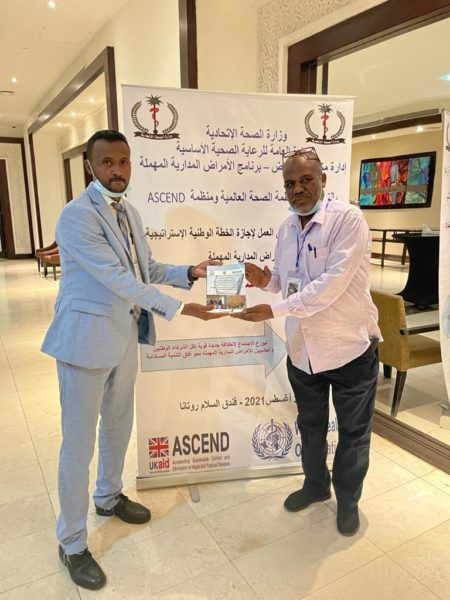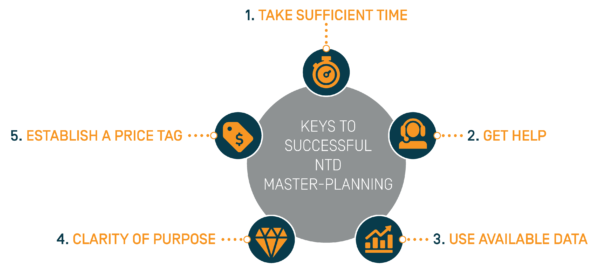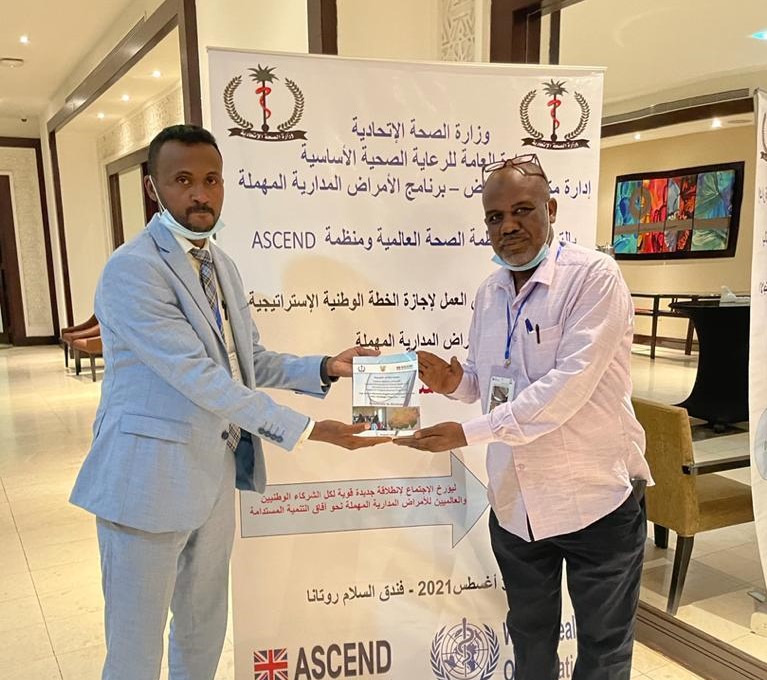
Five lessons
In 2012, WHO and member states agreed to a 2020 Roadmap towards the eradication and elimination of neglected tropical diseases. This global goal guided the formulation of five-year strategic plans at the country level, known as “NTD Master Plans”. This year witnessed the launch of the updated global 2030 Roadmap – and countries across the African continent are in the process of drawing up fresh five-year Master Plans.
The Ascend project, funded by FCDO and comprising of two lots, one focusing on South Asia, East and Southern Africa and the other on West and Central Africa, has been supporting national NTD programmes in over 20 countries. Crown Agents (consortium lead), Abt Associates, Oriole Global Health and The Royal Tropical Institute in the Netherlands (KIT) implemented the programme across countries in East and Southern Africa and South Asia. Ascend included provision of technical support for the Master Planning process according to country priorities and needs. Although many countries were still at an early stage of the process, Ascend convened a virtual learning event in August 2021. This brought together national NTD programme managers and other stakeholders from Lot 1 countries to reflect on progress to date. This article highlights five lessons so far.

- It takes time
Timelines for Master Plan development are typically over-optimistic. Even in Sudan (the first to complete), the process took nearly double the time originally estimated. Two aspects, in particular, have proved to be particularly time-consuming: the review and quality-assurance of data on current epidemiological status for each disease; and multiple rounds of stakeholder consultation for process planning, technical work, consensus-building and final review. In practice, the process is likely to take at least 4-6 months from start to finish.
- Get help
A new Master Plan is not simply a “refresh” of the old one under new headings. It requires NTD programmes to:
- Assess the latest epidemiology of relevant diseases
- Analyse systematic impediments and devise solutions
- Convene and consult with a wide range of stakeholders across multiple disease areas
- Draft, revise and finalise an extensive document (over 120pp in Sudan’s case)
NTD programme personnel cannot do all of this while discharging routine duties. Part of Sudan’s success was due to the engagement of a (national) consultant with good local and technical knowledge, with the trust of the Ministry, who was available to provide continuity of support until the task was completed.
- Use available data
To determine your new direction, you need to know where you are. Ethiopia’s NTD programme devoted around three months to evaluating the previous plan and assessing the status of each disease. Sudan triangulated available data to make the best estimates of the current situation, despite imperfect data. The South Sudan NTD programme was handicapped by sparse disease data, making it difficult to determine baseline, target and programme interventions for each disease. All countries recognised the need for better data – and stressed the need for performance indicators to be framed so that they could be tracked from year to year.
- Clarity of purpose
The guidance issued by WHO included a proposed framework for setting strategic objectives. This was very detailed, but also quite complex. Sudan adopted a simplified approach. This followed the grouping of disease targets in the 2030 Road Map – but also embraced cross-cutting aspects such as integration, health system capacity and inter-sectoral collaboration. The resulting hierarchy of objectives was elegant in its simplicity – and Sudan MOH found it clearer and more intuitive than the model in the guidance document.
| 2 broad themes | 9 priority areas | 20 strategic objectives | Disease |
| Cross-cutting | Governance & leadership, coordination, financing | #1 | n/a |
| M&E, information systems | #2 | n/a | |
| Supply chain | #3 | n/a | |
| Integrated approaches | #4-5 | n/a | |
| Health Promotion | #6 | n/a | |
| Accelerate programmatic action | Diseases targeted for eradication | #7 | Guinea worm |
| Targeted for elimination (transmission interruption) | #8-9 | Leprosy, Onchocerciasis | |
| Targeted for elimination as public health problem | #10-15 | Visceral Leishmaniasis, Lymphatic Filariasis, Rabies, Schistosomiasis, Soil-transmitted helminthiases, Trachoma | |
| Targeted for control | #16-20 | Dengue, Leishmaniasis, Mycetoma, Scabies, Taeniasis/Snakebite |
- Costing
Without a “price tag” there is no basis for mobilising funding for plan implementation. Conversely, a well-justified resource framework should help identify gaps so that resources can be marshalled and coordinated. In practice, the Ascend experience shows that Master Plan costing is complex and expert support will be beneficial.
Intervention scale-up targets need to be defined before costing begins. Bottom-up activity and input-based costing is extremely laborious and is more appropriate to annual budgeting than estimation of the resource envelope for a five-year plan.
The vast majority of Master Plan cost is represented by accelerated disease control interventions. For this purpose, unit costs provide an empirical basis for estimating resource needs. If – as in South Sudan’s case – local unit cost data were unavailable, best estimates from similar contexts can provide a working basis for costing.
From plan to reality
Too often, “planning as ritual” results in documents that are destined for the shelf. All participants stressed that the ultimate goal is to operationalise the Master Plans. The steps above should help ensure that plans are relevant, technically-sound, and have clarity of purpose. Beyond this, it is vital that they enjoy stakeholder buy-in, national ownership and political commitment. With these ingredients in place, the ambitious goals of the 2030 roadmap vision may be brought within reach.
